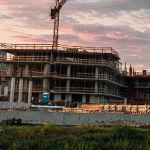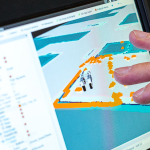In the ever-evolving landscape of construction, innovative methods are reshaping the way buildings are designed and erected. One such method gaining substantial attention is prefabrication, often touted as a game-changer for the industry. But, is prefabrication truly the future of construction? Let’s delve into the intricacies of this construction approach and explore its potential impact on the future of the industry.
The Essence of Prefabrication
Prefabrication, or off-site construction, involves manufacturing building components in a controlled factory environment before transporting and assembling them on the construction site. This departure from traditional on-site construction methods presents a series of benefits that resonate with both builders and developers.
Speed and Efficiency:
One of the primary advantages of prefabrication is speed. Since components are manufactured concurrently with on-site preparation, construction timelines can be significantly compressed. This swift assembly process translates to quicker project delivery, allowing for earlier occupancy and return on investment.
Quality Control:
Prefabrication takes place in controlled factory environments where every element is subject to rigorous quality control measures. This results in consistently high-quality components, reducing the likelihood of errors and defects often encountered in traditional on-site construction.
Cost Savings:
While the initial costs of prefabrication might be higher due to factory setup and transportation, the potential for long-term cost savings is considerable. The efficient use of materials, reduced construction timelines, and minimized labor requirements contribute to overall project cost-effectiveness.
Sustainability:
Prefabrication aligns with sustainable construction practices. The controlled manufacturing process generates less waste, and the precision in component fabrication contributes to optimized material usage. Additionally, the ability to reuse prefabricated components in different projects enhances sustainability efforts.
Versatility:
Prefabrication is not limited to specific building types. It is a versatile approach applicable to various construction projects, from residential homes to commercial structures. This adaptability positions prefabrication as a viable solution across diverse segments of the construction industry.
Technological Integration:
Advancements in technology have further propelled the feasibility of prefabrication. Computer-aided design (CAD) and Building Information Modeling (BIM) play integral roles in optimizing component design, ensuring precise fabrication, and streamlining the assembly process.
Is Prefabrication the Future?
As we contemplate the future of construction, prefabrication emerges as a compelling candidate to redefine industry norms. Its ability to address key challenges such as labor shortages, tight construction timelines, and sustainability concerns positions it as a frontrunner in the construction methodologies of tomorrow.
Conclusion: A Paradigm Shift in Construction
While prefabrication may not entirely replace traditional construction methods, its integration into mainstream practices is undeniable. The future of construction is likely to witness a paradigm shift, with prefabrication playing a central role in meeting the demands of a rapidly evolving industry. As technology continues to advance and the need for efficiency grows, prefabrication stands poised to revolutionize the way we build, shaping a more streamlined, sustainable, and innovative future for construction.


